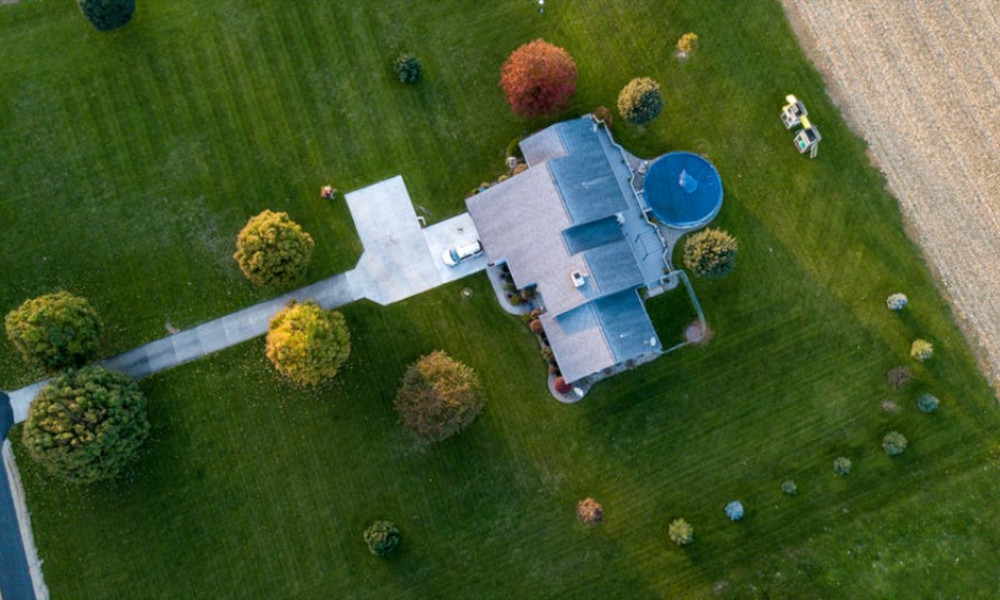Nobody likes the idea of material sloughing off and drifting away. All the soil of your yard, heavy with moisture, drifting into the street and taking your investments in grass and topiary along with it.
To avoid this uncomfortable event, invest in proper landscape grading. The gentle slopes and well-thought-out layers of soil involved keep water flowing and your landscape healthy.
The health of the yard is only one advantage of landscaping and grading. Aiding irrigation lowers the chance of water damage to the home. Damages that cost upward of $4400 in cleaning and repairs for even a single room.
How does grading help promote and utilize irrigation? Read on to discover more.
Landscape Grading Benefits
You find numerous benefits from landscaping design.
First, the new landscape diffuses water to the irrigation system in a set way, aiding the irrigation overall.
Second, the grade protects the topsoil and all of your aesthetic landscaping efforts.
Third, a finely graded landscape offers you opportunities to recycle and utilize water. This effort enhances the previous two benefits directly.
Irrigation Purpose
Irrigation systems for a landscape need to be adequate to the climate your home resides in. When irrigation is too good, you waste both free rainwater and snowmelt and water you pay for sprinklers.
When irrigation is inadequate, the water pools in places, causing a myriad of problems. Close to the house, pooled water damages the foundation opening cracks in the ground and the foundations itself.
These cracks allow water and termites to infiltrate the lower floors, and eventually the upper.
Pooled water throughout the lawn and yard offer breeding grounds for mosquitos. Local wildlife suffers from more parasites. This standing water also poses a health risk to pets that may drink from it.
Foundation Protection
Grading and landscaping work foremost to protect the foundation of the home. The aim of professional grading services is to shore up your assets and add long-term protection.
Roofing contributes to the irrigation system of a home by dumping water further off. Grading then keeps gravity working to diffuse the water quickly away from the home and to the edges of the property line.
Heavy rain and ice call for pipes, gravel, and other diffusion systems. These can’t work effectively if the topsoil and slope work against them.
Grading vs Leveling
Controlling your runoff saves money and improves the aesthetics of your landscaping. Avoiding pockets of loose soil and lumpy ground keeps your surface intact.
A slope graded toward the house creates a swimming pool. Too steep a grade away from the home leaves no protection for the topsoil to hold on.
Leveling keeps the ground smooth and contoured. Grading keeps the flow of water under the control of gravity.
You add top-level landscaping to give a yard the look you desire, land grading works under the radar, so to speak, to benefit the structures.
Beautification
Grading offers its own set of beautification rewards. A property filled with pits and valleys, or obvious sideways structures, doesn’t look great.
Pooled water and uneven drainage create brown spots and dead pockets of grass and vegetation. Improper soil forms hazards for trees, offering too little purchase for roots and leads to leaning or surface swells.
No matter what you want to put on top of your soil, the grade and irrigation below need to be properly managed and understood to keep the yard looking good.
Offsets
Final grade landscaping doesn’t mean flat and featureless. The purpose is to create workable ground that performs as expected without breakdowns, clogs, and surprises.
Making use of water runoff, both natural and artificial, comes down to what you know to do with it.
Adding offsets to the landscape adds unique aesthetic features that also let you reclaim and use more of your water assets. Normal landscaping and grading only use half of the runoff, with the rest flowing back into the grid.
Bioswale
This runoff offset design removes silt from the water, keeping your soil nutrient-rich and avoiding sinkholes.
You add vegetation with a high water tolerance to an area along with a mesh of wire or fabric. The vegetation takes advantage of the water, sucking it up quickly. Meanwhile, the mesh strains the runoff and keeps the silt in place.
Bioswales work best when installed in areas of frequent standing water. No matter the grading or irrigation, soil conditions are not stable. Clay in the soil, in particular, shifts, clumps, and compacts irregularly.
A bioswale marks out this area, to prevent tripping from foot traffic, and limits the accumulation of water. Working with the soil, rather than against it, saves time and effort.
Rain Garden
Another useful accouterment to a problem area is a rain garden. Rather than try to fill in a divet where water accumulates, you dig down to create a small pool.
You add permeable soil to the area along with compost, sand, or other topsoil to create a rich area for plants. Just like the bioswale, you put in water-tolerant flora. These areas make terrific habitats for birds and pollinators.
A rain garden makes a fine accent piece and its attraction for pollinators aids a vegetable or herb garden.
Planning
Grading can be done year-round. You want to plan for the worst seasons and build in the best.
Work can’t be done in active rain or heavy drainage periods. Keep an eye out for problems with trees and grass to spot subtle problem areas.
If you notice water seepage into the home after heavy rain, consider getting ahead of the problem before calamity strikes.
Smooth it Out
Landscape grading does a lot of work to aid irrigation. Even more, it does work to keep a yard functional and beautiful. Lumpy ground and standing water both represent health hazards that need to be addressed.
Get the most out of your landscape by regrading. If you have questions or concerns about your current landscape, send us a message and see what we can do for you.

